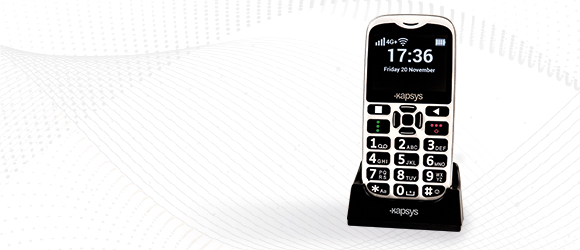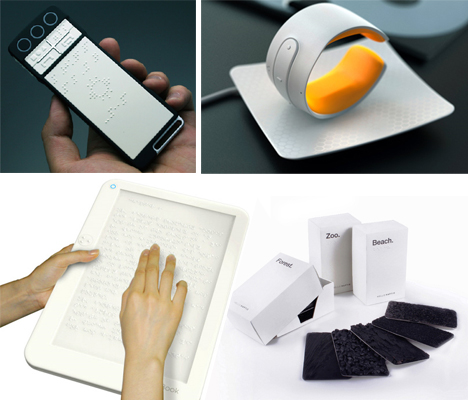Voice-Activated Assistive Devices: Supporting the Visually Impaired
Discover Innovative Tools Created for the Visually Impaired
The growth of cutting-edge devices for the aesthetically impaired stands for a considerable advancement in ease of access and independence. Technologies such as clever glasses with AI capabilities and mobile applications designed to supply acoustic summaries are improving daily experiences for users.
Smart Glasses for Navigating

Smart glasses designed for navigating are transforming the way aesthetically impaired individuals engage with their setting. These advanced devices make use of a combination of camera technology, expert system, and acoustic comments to offer real-time details about environments. By using challenge detection systems, wise glasses can alert customers to potential dangers, allowing much safer movement in both unknown and familiar settings.
The combination of GPS modern technology better improves navigating capacities, allowing users to receive acoustic directions as they move. This hands-free technique not just fosters freedom but additionally equips visually impaired individuals to navigate city landscapes with raised confidence. Furthermore, lots of wise glasses are outfitted with functions that recognize sites and street indications, offering contextual details that boosts the customer experience.
Moreover, the growth of these tools is constantly advancing, with firms working to enhance the accuracy of things acknowledgment and broaden the variety of navigational functions. As wise glasses come to be more obtainable and budget-friendly, they hold the potential to dramatically change every day life for visually damaged customers. Eventually, these innovative tools represent an essential action towards inclusivity, offering improved wheelchair and a higher sense of freedom for individuals navigating the globe around them.

Mobile Application for Daily Living
How can mobile applications enhance the daily lives of aesthetically damaged individuals? Mobile applications are changing the method aesthetically damaged customers browse their settings, manage day-to-day jobs, and gain access to info. These applications give essential assistance via numerous functionalities, promoting self-reliance and enhancing top quality of life.
Numerous ingenious mobile apps are created specifically for daily living. Apps like Be My Eyes link aesthetically impaired customers with sighted volunteers via video telephone calls, enabling them to obtain real-time support with tasks such as checking out tags or navigating unknown rooms. Seeing AI, established by Microsoft, makes use of fabricated knowledge to define environments, read text, and recognize things, efficiently transforming a smartphone into a powerful device for day-to-day assistance.
In addition, navigation applications customized for the aesthetically damaged, such as Aira and BlindSquare, provide audio-based directions and environmental info, enabling individuals to traverse their surroundings safely and confidently. Past navigating and immediate help, mobile applications also support organization and task administration, with functions that aid individuals establish suggestions, create order of business, and track consultations. In summary, mobile applications work as essential resources, empowering aesthetically damaged individuals to lead more independent and satisfying lives.
Wearable Technologies for Help
Empowerment via innovation is increasingly apparent in the world of wearable gadgets designed to help visually damaged people. These cutting-edge devices incorporate perfectly right into day-to-day live, improving navigating and providing crucial comments to individuals. Smart glasses outfitted with cameras can acknowledge faces and check out message aloud, permitting users to connect more with confidence in specialist and social settings.
One more notable innovation is making use his explanation of haptic feedback systems in wearable tools. These systems make use of resonances or other responsive signals to share information about the individual's setting, such as barriers or changes in terrain, boosting movement and safety and security. Wearable modern technologies additionally include wristbands that connect to mobile phones, informing users to notices through refined vibrations, thus improving connection without reliance on aesthetic signs.
As these innovations continue to progress, they are not just enhancing self-reliance for visually impaired people but likewise fostering a higher sense of inclusion in culture. By connecting the gap in between obstacles dealt with in daily living and the potential for autonomy, wearable technologies act as critical devices in the quest for equality and empowerment for those with visual disabilities.
Audio Description Tools
Audio summary devices play a crucial duty in enhancing ease of access for visually damaged people, providing them with the ability to involve with visual media. Assistive technology for the blind. These tools provide narrated descriptions of vital visual elements in films, television programs, and live performances, making sure that individuals can totally understand the context and feelings conveyed through visuals
Sound description can be incorporated right into different platforms, including streaming services, movie theater screenings, and live theater. Lots of popular streaming services now consist of audio summary as an accessibility feature, enabling visitors to choose it easily. In enhancement to traditional media, specialized apps additionally exist, giving audio summaries for art exhibits, galleries, and other social events.
The efficiency of audio description rests on the skill of the narrators, who have to communicate visual information succinctly without detracting from the initial audio. Advancements in this area are also paving the method for even more tailored experiences, where customers can change the degree of information and pacing according to their choices.
Braille Innovations and Gadgets
Braille gadgets and developments have actually substantially transformed the way visually damaged individuals communicate with text and info. Modern improvements have led to the advancement of flexible tools that enhance literacy and self-reliance amongst individuals.
Additionally, mobile Braille notetakers integrate standard Braille input with modern-day performances, promoting note-taking, organizing, and document modifying on the move. Voice-activated assistive devices. These compact tools usually feature text-to-speech abilities, bridging the space between Braille and auditory details
In enhancement, cutting-edge Braille printers have arised, allowing individuals to create Braille tags, papers, and educational products efficiently. This accessibility fosters greater participation in instructional and expert environments, ultimately advertising inclusivity.
Furthermore, research into clever Braille modern technologies proceeds to expand. Tools that incorporate fabricated intelligence are being explored to give real-time navigation aid and contextual details, enhancing the user experience in diverse settings. Generally, these advancements mirror a commitment to equipping visually damaged people through innovation, guaranteeing they can quickly accessibility and engage with the globe around them.

Verdict
The innovation of cutting-edge devices for the aesthetically damaged substantially improves independence and quality of life. Smart glasses, mobile applications, wearable look at this site modern technologies, audio description tools, and Braille technologies collectively empower people by supplying essential navigating help, ecological understanding, and improved analysis experiences. These innovations not just foster higher incorporation but additionally promote autonomy in everyday tasks, eventually adding to an extra weblink equitable and easily accessible culture for visually impaired people. Proceeded advancement in this area holds promise for additional improvements.
As wise glasses become more budget friendly and easily accessible, they hold the prospective to considerably transform everyday life for aesthetically damaged customers. Mobile applications are reinventing the method visually impaired customers navigate their settings, manage day-to-day jobs, and accessibility information. Applications like Be My Eyes connect aesthetically damaged users with sighted volunteers through video calls, permitting them to get real-time support with jobs such as checking out tags or browsing unknown rooms.Additionally, navigating apps tailored for the aesthetically damaged, such as Aira and BlindSquare, offer audio-based instructions and environmental info, enabling customers to traverse their surroundings securely and with confidence.The advancement of cutting-edge tools for the aesthetically impaired dramatically improves self-reliance and top quality of life.